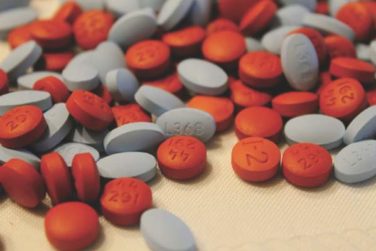AT THE ADA ANNUAL SCIENTIFIC SESSIONS
BOSTON (FRONTLINE MEDICAL NEWS) – Using certified diabetes educators to intensify the therapeutic management of people with diabetes was feasible in the primary care setting and effective for improving hemoglobin A1c in a cluster-randomized controlled trial.
Among 175 subjects enrolled from 15 participating centers, intensified evidence-based diabetes medication management protocols delivered by the certified diabetes educators (CDEs) were associated with significantly decreased HbA1c (from 8.8% to 7.8%) at 1 year, while usual care in 65 patients was associated with a slight increase in HbA1c, from 8.2% to 8.3%, Janice C. Zgibor, Ph.D. of the University of Pittsburgh reported at the annual scientific sessions of the American Diabetes Association.
Among those with an HbA1c of 8% or greater at baseline, participation in the diabetes education group was associated with a greater likelihood of beginning a new medication during the course of the study, although the number of patients in the control group who received a new medication also increased over time, she said.
Participants in the study had a mean age of 61 years and were from a group of nonacademic primary care practices that researchers recruited and randomized to provide the intensified diabetes management protocols provided by CDEs or to provide usual care to their diabetic patients. All study participants had type 2 diabetes diagnosed at least 1 year earlier and had HbA1c, blood pressure, and low-density lipoprotein cholesterol values above goal at last assessment.
The experimental treatment protocols were patient centered and took into consideration the patient’s lifestyle, psychosocial factors, risk for hypoglycemia or other adverse events, disease duration, comorbidities, and support systems that included financial resources. Education and support were delivered by a CDE during visits in the practice setting or by phone or e-mail. Usual care involved one monthly support group meeting held in the primary care practice or a nearby location and conducted by the CDE.
CDEs ordered medication changes and lab work as needed via the electronic health record, pending physician approval.
All protocols were evidence based and adhered to ADA standards of care and other guidelines and were updated as evidence changed, Dr. Zgibor noted.
The intervention group subjects continued to see significant HbA1c improvement over 12 months, even after adjusting for differences in baseline HbA1c between the groups. The greatest improvement in the intervention group was seen at 3 months. The control group experienced a slight improvement at that time, but HbA1c in that group eventually started to increase.
“The absolute risk reduction was 30%. That means that an additional patient would improve due to treatment with the protocols, one wouldn’t change at all, and one would change on their own,” she said, adding that the findings suggest that it is feasible for diabetes educators to implement treatment protocols to intensify treatment.
The findings are timely, because while improvement has been seen over time in the proportion of persons with diabetes over the age of 20 years who meet goals for HbA1c, blood pressure, and cholesterol, only 18% reach the goals for all three, she said, adding that many approaches, including physician prompts, patient reminders, and incentives for both providers and patients have been tried and have contributed to improvement. The Institute of Medicine has called for redesigned strategies and noted them as a health care system priority topic.
Another IOM priority topic is to compare the effectiveness of using allied health providers for chronic conditions, and the findings from several studies have demonstrated that these providers can be integrated into primary care to improve diabetes outcomes, she said.
The current study bolsters those findings.
“This approach was well accepted by our physicians and their staff. There were significant improvements in HbA1c and they were sustained, treatment intensification was greatest in the intervention group after the first visit with the CDE, and over time the control group also experienced some treatment intensification. CDEs can be incorporated into the work flow of primary care. However, funding for dissemination and sustainability is problematic,” she said.
She noted, however, that the ADA and American Association of Diabetes Educators (AADE) recognition of self-management education provides a mechanism for reimbursement, but providers need to buy into the model.
Potential solutions for sustainability could include training office nurses to implement treatment intensification or alert providers to the need for treatment intensification, pooling resources (practices could share a CDE), and connection of CDEs to electronic health records to trigger alerts to providers to intensify treatment, she said.
Another University of Pittsburgh study presented at the ADA annual scientific sessions also demonstrated feasibility of a primary care approach to providing diabetes education, and reaffirmed the benefits of diabetes education in all patients with diabetes.
In that study, the feasibility of quality improvement approaches being used in other aspects of primary care, such as population management, electronic communication, and practice redesign, was evaluated in the context of diabetes education, according to Linda Siminerio, Ph.D., of the University of Pittsburgh.
Three CDEs were introduced to practices in their respective urban, suburban, and rural communities, and they proactively identified patients who might benefit from diabetes education, such as those at high risk for complications or with newly diagnosed diabetes, and those with frequent emergency department visits or hospitalizations. They arranged for referral and diabetes education visits and worked with primary care physicians on treatment plans.
Of 141 patients with type 2 diabetes who met with a CDE for diabetes education during the course of the study, those with pre-education HbA1c levels at or below 7% maintained those levels at 6 months and at 12 months. Those with pre-education HbA1c between 7% and 9% experienced significant reductions in HbA1c at 6 months, and the levels were maintained at 12 months.
Those at highest risk – with pre-education HbA1c greater than 9% – also experienced significant reductions in HbA1c at 6 months, with maintenance of the improvements at 12 months.
Overall the population also experienced significant improvements in triglycerides and total cholesterol levels, but systolic blood pressure and weight did not change significantly.
“These findings demonstrate the feasibility and potential effectiveness of this novel education practice–based approach to improving glycemia in type 2 diabetes patients and lowering triglycerides (which could be indicative of a positive impact from lifestyle changes that were supported by the diabetes educator), reaffirming the benefit of education in all patients, particularly those at highest risk,” said Dr. Siminerio, who also is chair of the National Diabetes Education Program.
This model, known as Glucose to Goal program , reflected a team approach with the provider and educator both contributing to possible initiation of supportive therapy, she said, noting that the approach was somewhat similar to that used in Dr. Zgibor’s study, except protocols weren’t used.
“That’s because we didn’t have them available, but we hope to have them soon. We will be partnering on this and deploying this model across our whole health system,” she said.
Dr. Siminerio noted a number of “anecdotal undocumented successes,” including patient reports of better communication and support, educator reports of an increase in patient access and volume of patients reached, and primary care physician support for the program and reports of quality improvement and reduced workload.
This approach holds promise to support diabetes care that is cost effective and scalable, she said, noting that it “integrates team care while leveraging existing infrastructure.”
Additional research is needed to assess long-term effectiveness, she said, noting that developing effective diabetes education programs is imperative, as diabetes self-management and time spent with diabetes educators has repeatedly been shown to improve clinical, psychological and behavioral outcomes, yet diabetes education is underutilized.
“Nationally, only 6.8% of individuals with newly diagnosed type 2 diabetes participate in diabetes self-management education within 12 months of diagnosis, and, only 4% of Medicare participants are reported to have received DSME [diabetes self-management education] and/or medical nutrition therapy,” she said.
Of note, the ADA and AADE, along with the Academy of Nutrition and Dietetics, released a joint position statement on DSME during the ADA annual scientific sessions.
The statement , jointly published online in Diabetes Care, The Diabetes Educator, and the Journal of the Academy of Nutrition and Dietetics, highlighted four critical times for assessing the need for DSME and support referral: at diagnosis, on an annual basis, when new complicating factors influence self-management and transitions in care occur. The statement provides guidance on the type of information and support patients might need at theses “critical junctures,” and outlines the appropriate content, roles, and action steps for both the referring provider and the diabetes educators ( Diabetes Care 2015 June 5 [doi:10.2337/dc15-0730] ).
A major gap in diabetes education is in the area of referrals; there aren’t many providers routinely referring patients to diabetes educators, because either they don’t know how to refer, can’t find an educator, or aren’t aware of the value of diabetes education, according to a press release on the statement.
“Yet those referrals are critical,” Dr. Siminerio said in the release.
“Referrals influence patient behavior a great deal. When providers refer patients to diabetes education, we see an 83% participation rate, but without those referrals participation is abysmally low. If patients believe their physicians think diabetes education is important, they take it a lot more seriously. Patients trust their providers,” she said.
The Remedy Study was funded by the ADA. Dr. Zgibor reported having no other disclosures. Dr. Siminerio reported receiving research support from Becton, Dickinson and Co.




